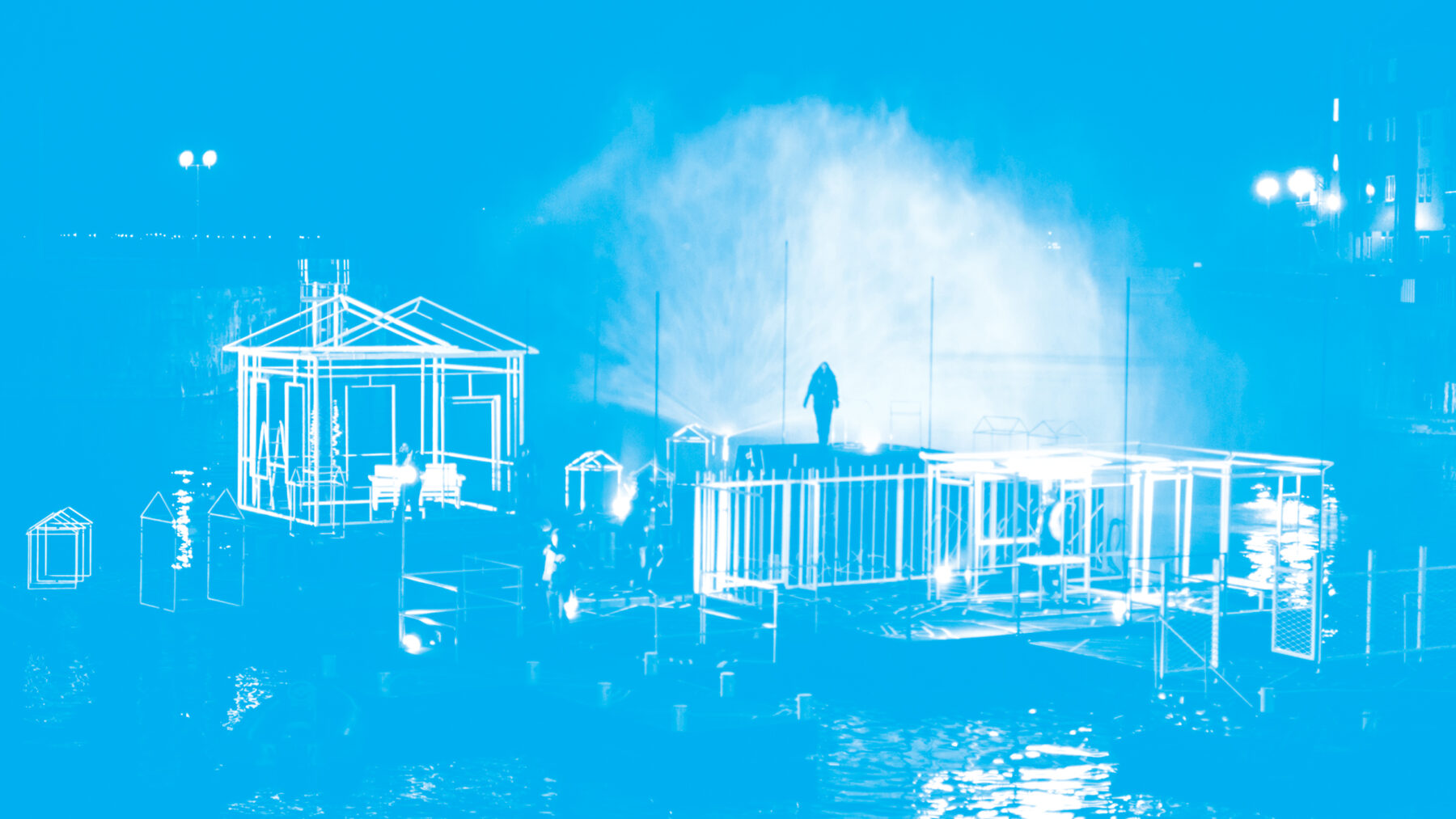Image Credit: Set Design by David Farley, Design Assistant Heledd Rees, Lighting Design by Katharine Williams, Directed by Alan Lane, A Slung Low Production, Photo by James Phillips
By Emma Tompkins
‘It is a very different thing to put a riot on a stage than on the steps of the town hall’
This sentence perfectly incorporates everything I feel about non traditional performance. Sadly for me, I didn’t say it, but these cracking 21 words come from Joanna Resnick, Producer at the Leeds based theatre company Slung Low, and if you know anything about them, it makes perfect sense.
It was said as part of a Zoom panel chat hosted by me back in July, and was the 4th instalment of Max Dorey’s brain child, a series of talks aimed at equipping graduates and emerging designers with the things they wanted to know. This one, titled ‘No where near the pros arch’ was a talk I wanted to have about the type of work I’m passionate about, work that doesn’t quite fit a specific bracket of theatre. I’m referring to them as ‘non traditional’ theatre events, by which I mean work that doesn’t necessarily start with a dead playwright, have a passive audience or fit in a black box. It’s the kind of work where the story might come in response to the landscape and the people who inhabit it, or involve a writer / performer asking audience members to sing or audiences to walk through a closed John Lewis store to get to a top floor ballroom. It might even have designers driving a car with a fire cannon on top.
These examples aren’t exactly traditional when you’re talking about performance making, but in yet another example of the English language not quite giving us the way to express exactly what we mean, the act of collaboratively telling stories that respond to the local community is probably the most traditional form of storytelling there is. My point in using the term ‘non traditional’ is that this type of theatre is a part of the rich ecology of our industry and the requirements and process of making it isn’t always made accessible for graduates of theatre design to know. So I invited a mix of producers, designers and theatre makers to share their perspective on how to make the work that isn’t always acknowledged as what theatre truly is.
I’m very grateful to have had the wisdom of Jessica Worrall a designer whose work has ranged from classical and ‘traditional’ to being an artist with the longest running experimental theatre group in the county.
And Daniel Bye, a Writer, Theatre maker, Director and Performer (often most of these at the same time) who’s work in experimental theatre and independent theatre making has seen him win awards and also perform to Neil Patrick Harris in the living room of a Scottish stately home.
I was also very fortunate to have two of Slung Low’s creative team aboard. Joanna Resnick and David Farley. Slung Low are a company who as well as being a regional hub for artists in Leeds, creating ambitious theatre projects and a pay what you decide community college scheme, are also the ward lead for the Covid response for their area, showing you exactly what a theatre really ought to look like. Given their current workload, to even have any of Producer Joanna’s time is something to be grateful for.
David Farley, who as a designer like Jess has worked across the strange and magnificent diaspora of our industry but who’s work with Slung Low has meant some of the most rewarding work of his career (plus he got to drive the fire car).
The attached document is the edited transcript of the chat. It offers experience and direct advice for those wanting to make their own work, from how to work collaboratively as a Designer and Artist, to how to navigate the curious world of council and private owned space as performance sites to how to best approach making an idea into a reality. All with a healthy dose of Designer inspiration and supportive words along the way.
Enjoy.


